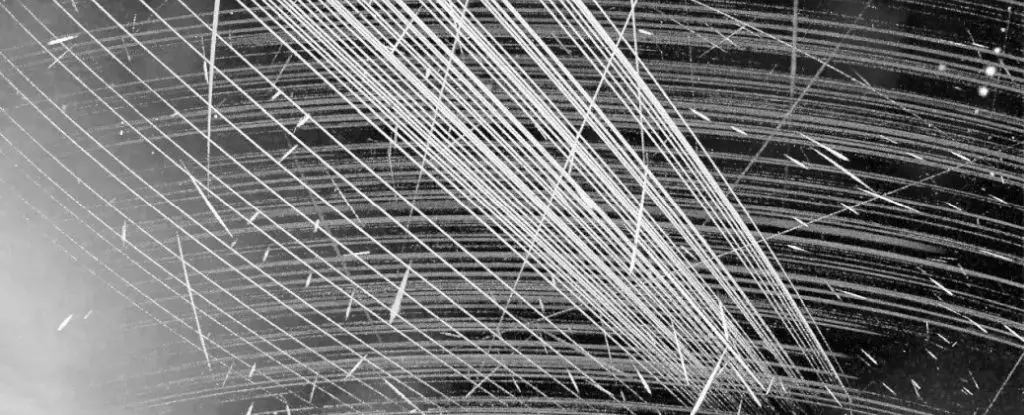The emergence of satellite swarms in low-Earth orbit is revolutionizing communications and internet access, but this advancement comes with serious unintended consequences. Recently, a troubling trend has arisen: the second generation of Elon’s Starlink satellites, referred to as v2mini and v2mini Direct-to-Cell, have been discovered to emit significantly more radiation than their earlier models. Specifically, they are reportedly leaking radiation up to 32 times greater than their predecessors. This increase poses a substantial threat to scientific pursuits, particularly in the realm of radio astronomy, which relies on specific wavelengths free from interference.
The radiation leak, which falls within protected radio wavelength bands critical to radio astronomy, was first highlighted in 2023. SpaceX, the company behind Starlink, initially acknowledged the issue and stated that solutions were forthcoming. However, with nearly 6,398 satellites currently in orbit and more being deployed at an astonishing rate of about 40 per week, the situation appears to be deteriorating rather than improving. This rapid expansion amplifies the unintended interference affecting radio observations, critically impairing our ability to study faint astrophysical sources.
Cees Bassa, an astronomer at the Netherlands Institute for Radio Astronomy (ASTRON), presented alarming findings that quantify the issue: “Unintended electromagnetic radiation from Starlink satellites is 10 million times brighter than the faintest astrophysical sources we observe.” To illustrate this disparity, Bassa compared it to the brightness of the full moon in contrast to the dimmest stars visible with the naked eye. As satellite launches continue, the risk of negatively affecting radio astronomy becomes an increasingly urgent concern.
Unlike SpaceX, other companies are also launching vast constellations of satellites. OneWeb has deployed 634 satellites, while Amazon plans to field over 3,000. Meanwhile, China’s Spacesail Constellation is set to launch around 15,000 satellites into orbit. The visible trails left by these satellites in the night sky raise alarms over light pollution, but the issues extend beyond visual disturbances. Recent studies have revealed that these satellite swarms also leak radio waves outside their designated frequency bands.
Using the LOw Frequency ARray (LOFAR), a sophisticated network of approximately 20,000 radio antennas throughout Europe, researchers identified that 97 Starlink satellites emitted radio waves in the 110-to-188 MHz frequency range, with significant emissions coming from the second-generation models. Despite the scientific community’s growing concern, current regulations do not explicitly address the unintended electromagnetic radiation emitted from these satellite constellations.
Researchers and astronomers assert that it is essential for regulatory measures to be established to mitigate this growing issue. While the interference posed by a single satellite may seem negligible, the cumulative effect of thousands of satellites could lead to overwhelming brightness in critical radiation bands. The astronomers strongly recommend that SpaceX actively analyze its data to pinpoint the sources of radiation leakage in its satellites to remedy the problem before it escalates further.
Federico Di Vruno, an engineer at the SKA Observatory, expressed the need for collaborative efforts among satellite companies: “Humanity is clearly approaching an inflection point where we need to preserve our sky as a window to explore the Universe.” He called for the industry to prioritize minimizing unintended radiation emission as part of their sustainable space policies.
The Future of Radio Astronomy and Technology
The stake of radio astronomy is not only crucial for scientific advancement but also carries implications for various technologies we rely on daily, such as Wi-Fi, GPS, and even medical imaging. The potential for harmful impacts extends beyond the immediate observable phenomena, making it vital that the scientific community, regulators, and satellite operators collaborate to safeguard the integrity of radio astronomy.
As Jessica Dempsey, ASTRON’s general and scientific director aptly stated, “We just need the regulators to support us, and the industry to meet us halfway.” The stakes have never been higher as humanity navigates the challenge of balancing technological progress with the preservation of our access to the celestial wonders beyond our planet. Ensuring that the skies remain clear for future discoveries is an urgent priority that must not be neglected.

